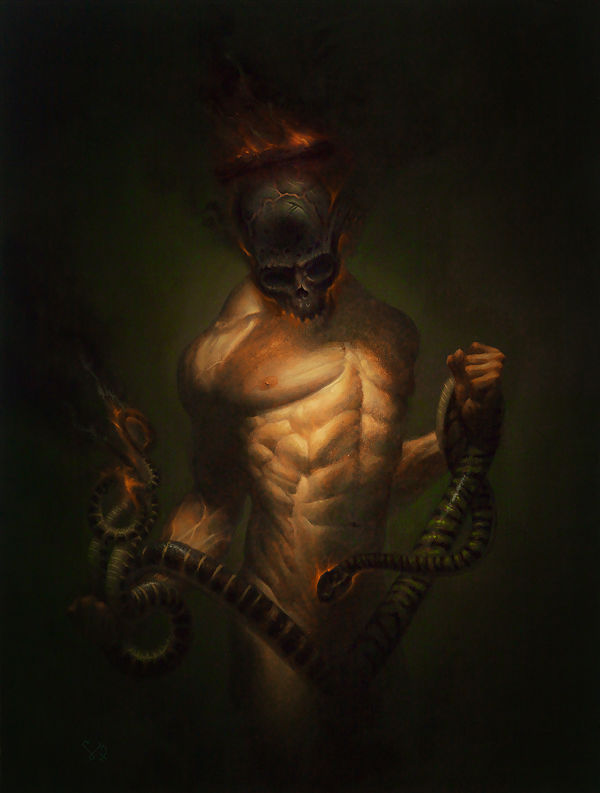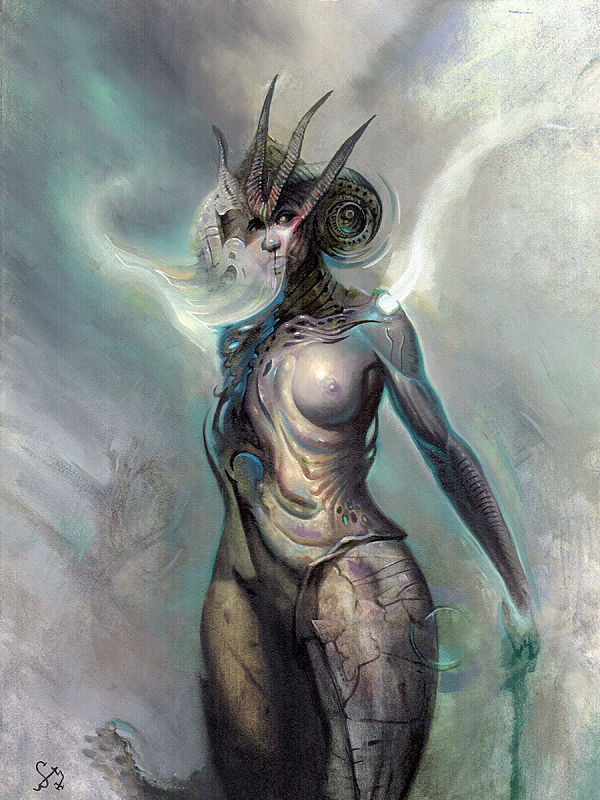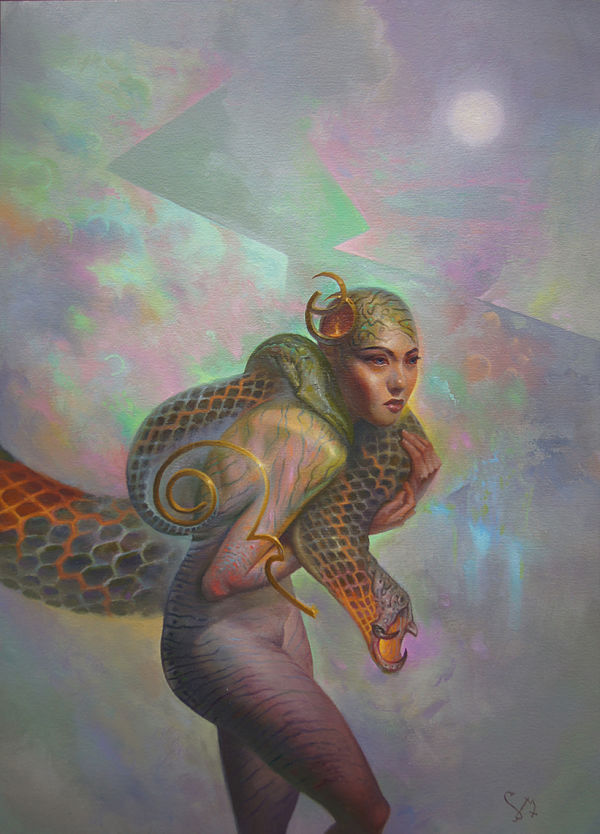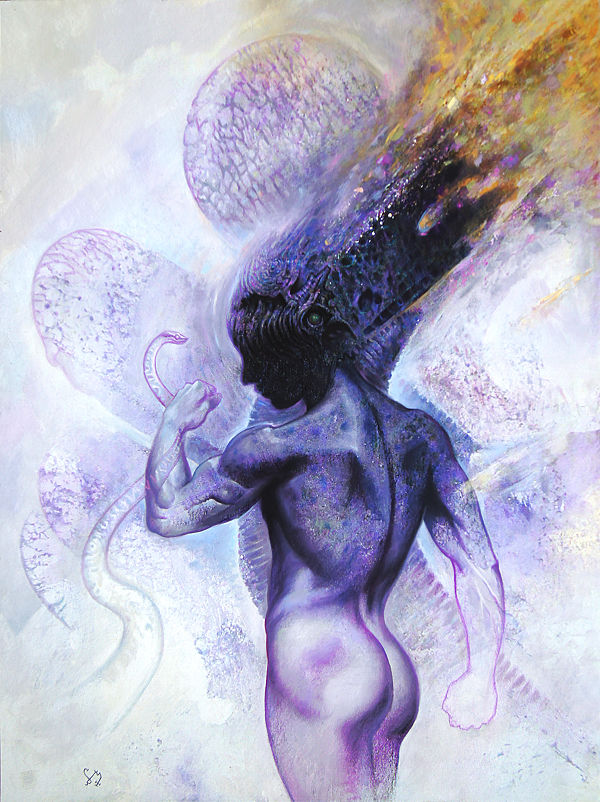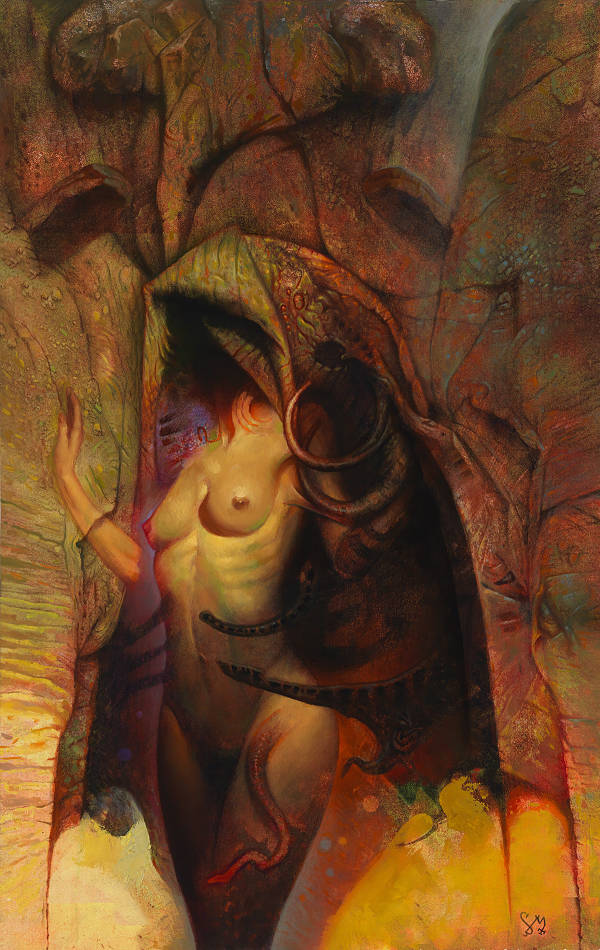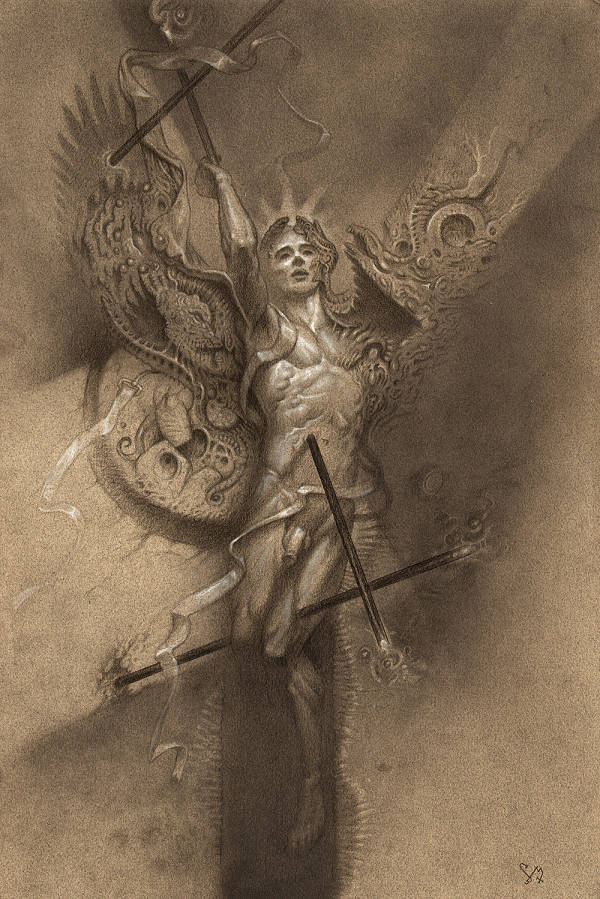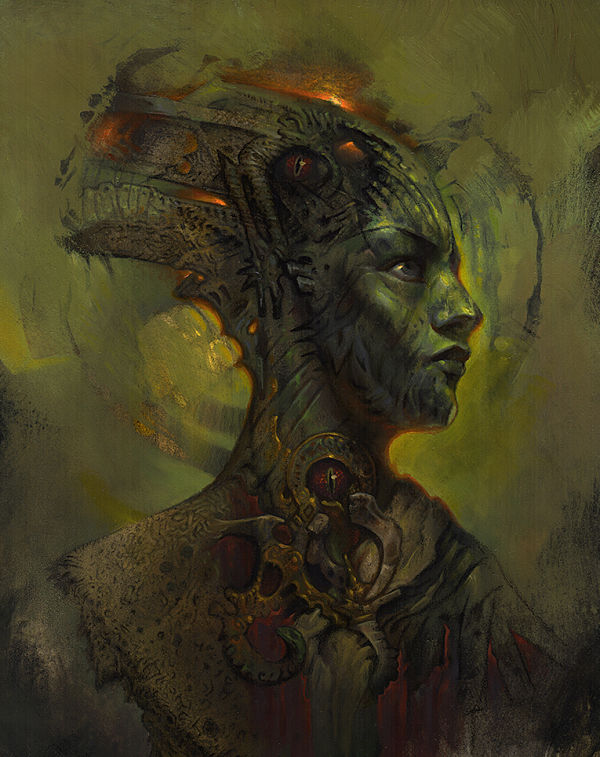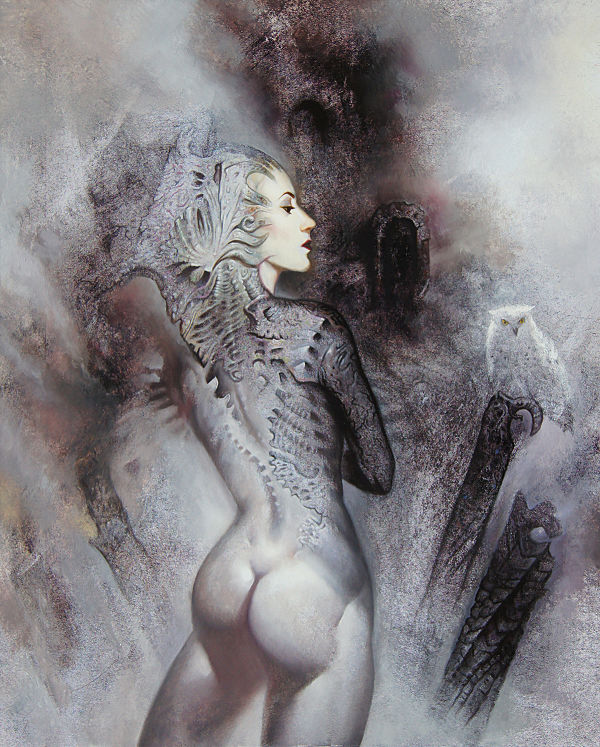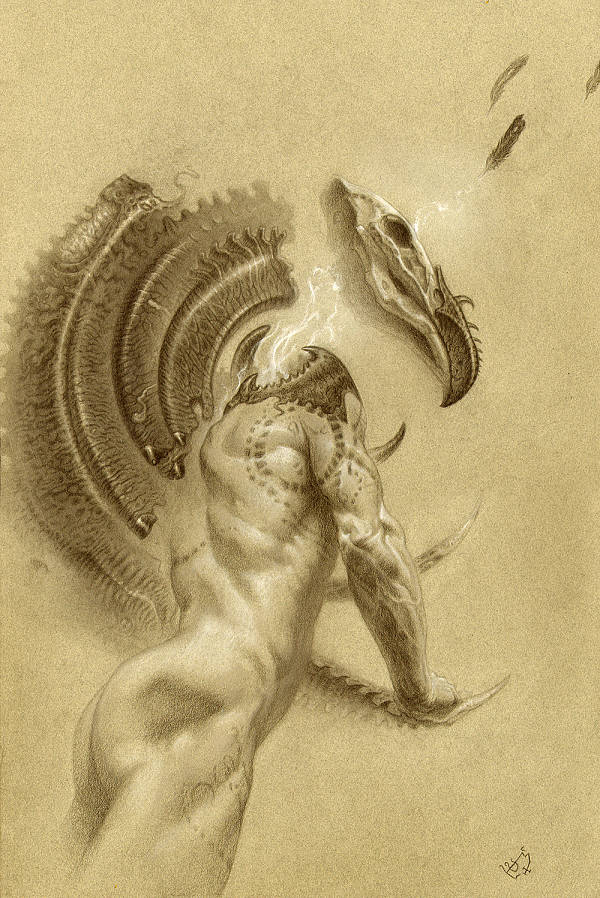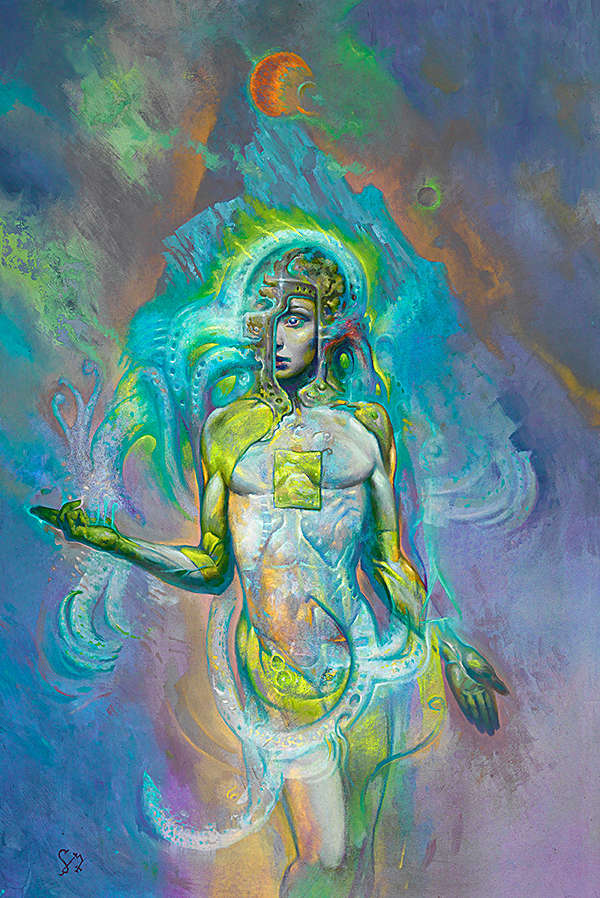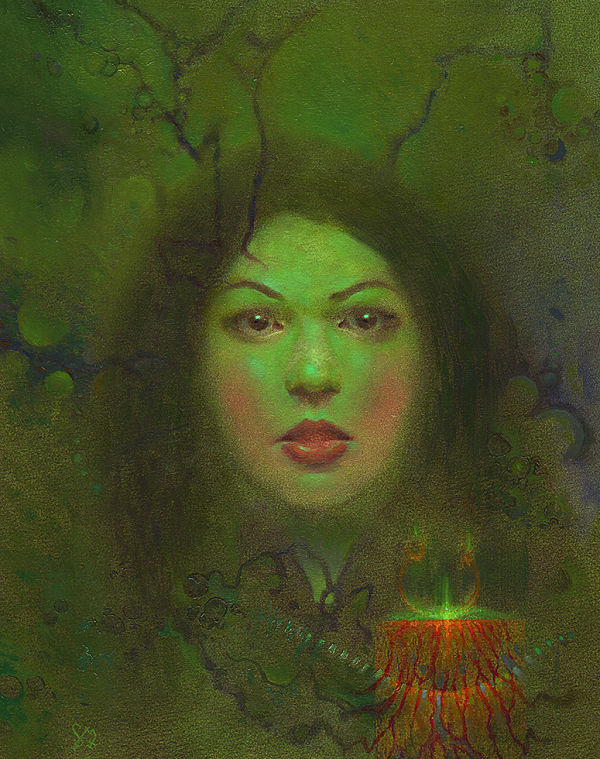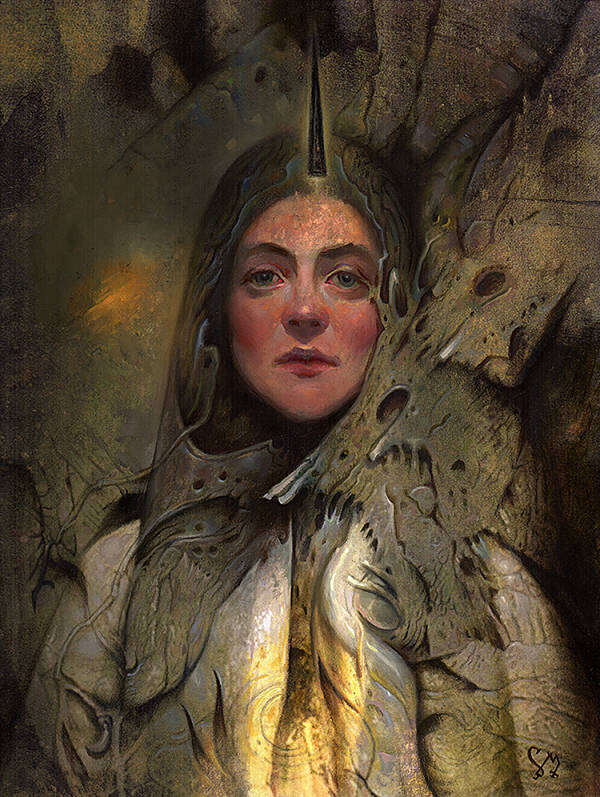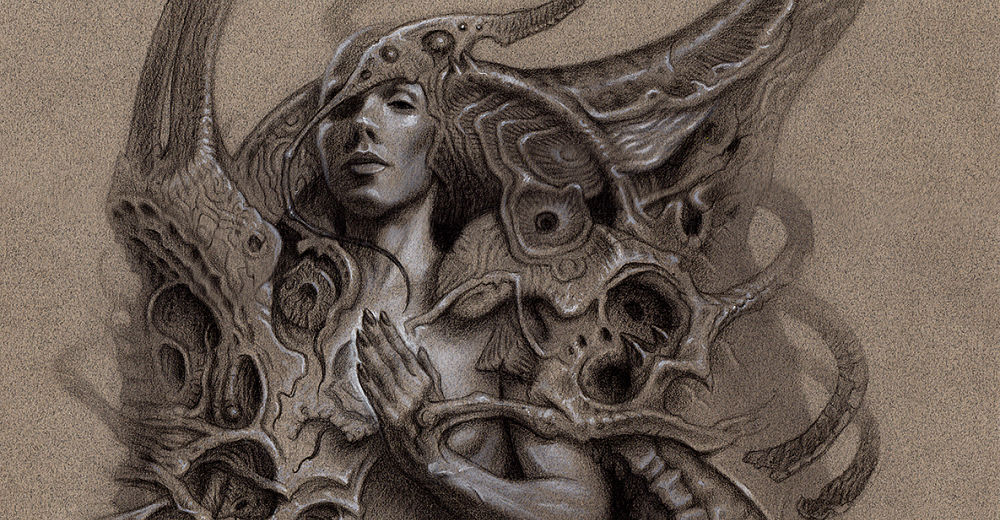My fascination with demonology started during teenage years, when discovering the sculptures of the cathedrals and the paintings of Hieronymus Bosch. As I was also a bookworm, I finally stumbled on the Ars Goetia, a 17th century grimoire listing more than 70 different demons, with their bizarre appearances. Since then, I have kept an interest in art representations of these creatures, which are actually embodying some elements of our humanity rather than being pure evil. With that in mind, the impressive work of Jim Pavelec could only satisfy my ever-growing curiosity. Indeed, the artist is dedicating his personal work to Goetia, the art to summon demons. He is not conjuring them for real -at least he is not publicly admitting it, but he is giving them a body, as well as a soul, through paintings and drawings. With this esoteric subject, Jim is questioning the contemporary identity of dark art and our modern quest for the intangible. While our world is full of gods from the machine, we still need to face our inner demons. But we shouldn’t be afraid because, in the process, we could really find the most luminous part of our humanity: connection.
Get to know the many demons of Jim Pavelec with the inspiring interview he gave to Beautiful Bizarre Magazine.
How did you come up with the theme of Goetia and esotericism in general?
I was a freelance fantasy illustrator for quite a while, and I felt my work had grown stagnant. The amount of work I was taking and the quick turnarounds was not allowing me to develop as an artist. I decided to pull back significantly on the freelance work and focus on personal work in which I could really push my drawing and painting style. I started out doing random monsters, demons, and some Lovecraft creatures, but the work lacked cohesion. I knew I needed a central theme. I remembered a book I had loved as a teen, the Ars Goetia, and pulled it off of my shelf. As I thumbed through it, seeing all of the beautiful sigils, I knew this needed to be the focus of my new work.
Are your paintings the result of intense research on the subject or do you rely mostly on your imagination, feelings and instinct?
There is quite a bit of research involved. I’m not doing strict interpretations of the descriptions of the demons from the Goetia. I’m just using it as my jumping off point. I’m researching a lot of occult art from various time periods and places, as well as looking at all forms of art to push myself into new areas of design, concept, technique, and style.
Would you consider your portraits of demons, witches, and other creatures as visions? If yes, how do they come to you?
I would say they are visions, in a way, but not like dreams or hallucinations. I’m focusing on the act of working (drawing, painting, etc.) as a form of ritual. Instead of ceremonial altars and candles, I have my drawing table, easel, and tools. As I delve into each new piece, I try to avoid the easy solution. I try to allow my mind to open up and receive feedback from whatever surface and tools I’m working with. This allows various shapes, textures, and colors to appear on the page that I would have never considered in my freelance years.
How do you proceed to create each of your artworks? Which technique(s), tools and specific creative conditions are you using?
I always start with a lot of thumbnail sketches. These little sketches are invaluable to any artists, no matter what area you work in. Once I find a gesture or shape that I like, I decide if the final representation is going to be a finished drawing, or a painting. If it’s going to be a drawing, I like to find very good figure reference for it. One thing I like to do is find a model through Instagram or Facebook and contact them to ask permission to use one of their photos. I pay them a small licensing fee for the image. I like doing this because I think it helps build community online, and helps support other artists. For my finished drawings, I like to work on toned paper. I use a powdered graphite technique that utilizes a kneaded eraser pressed into interesting rocks and fossils which create interesting organic textures on the paper. I use several tones of gray pastels to bring up the highlights.
If the piece is going to be a painting, my approach is totally different. I begin using digital software such as ArtRage, Procreate, and Photoshop to start trying to find unique patterns of light and dark and color combinations. Once I find something I like, I print it out and work on it in pastel. When I am happy with the pastel piece, I will scan that into the computer and print it out larger. I mount the print out onto Masonite using acrylic medium, and then begin the oil painting. It is a very convoluted way to get to the final painting, but I find that it has really allowed me to be much more creative and experimental.
What do you want to show with your art, now and in the future?
My main focus is creating occult art that is both dark and beautiful. I want to stay away from many of the stereotypes of dark art. I’m using bold, intense colors in a way that you wouldn’t necessarily relate to demonic or occult art. I want to challenge peoples ideas of what dark art can be.
Do you believe in magic and how would you convince the public to believe in it and to find it?
The word Magic elicits a strong response from the majority of the public, and it’s usually a negative one. They see it as black and white, looking at the extremes. Magic to them is Harry Potter using his wand to cast a Stupify spell and that is strictly for the realm of fantasy and has no place in the real world outside of entertainment. It’s fascinating to me that many of these people go to church on the weekend and believe that with a few words a man changed a piece of bread into the literal body of Jesus, which they then consume… but the idea of “Magic” is absurd to them. For me, Magic happens in little gray areas that are specific to each individual, not in giant flashy displays.
How do you explain the tight link between art and esotericism, especially in our contemporary world?
I think the esoteric in art is having a revival of late because of technology. Everybody knows everything about you, especially corporations, if you are involved online. So in art it makes sense that people want something that explores the unknown, something that they can connect with in their own meaningful way that is linked with their unique experiences and perspective on the world.
Can you tell more about some creatures featured in your paintings that you think are still inspiring you, could inspire our readers?
I mostly just want the body of work as a whole to inspire people to push their creative bounds no matter the cost. When I pulled back on my freelance work and decided to pursue this new path I had to get part time jobs to make ends meet. I worked at a gym for minimum wage, and drove a Lyft. At 40 years old that was a hard thing to do, but well worth it in the end.
Learn more about Jim Pavelec’s work on Ars Goetia and support him on Patreon.



